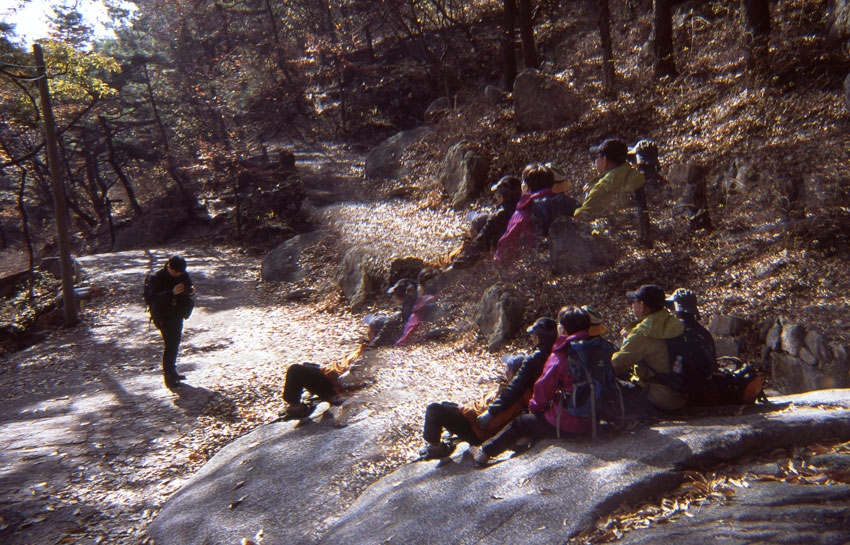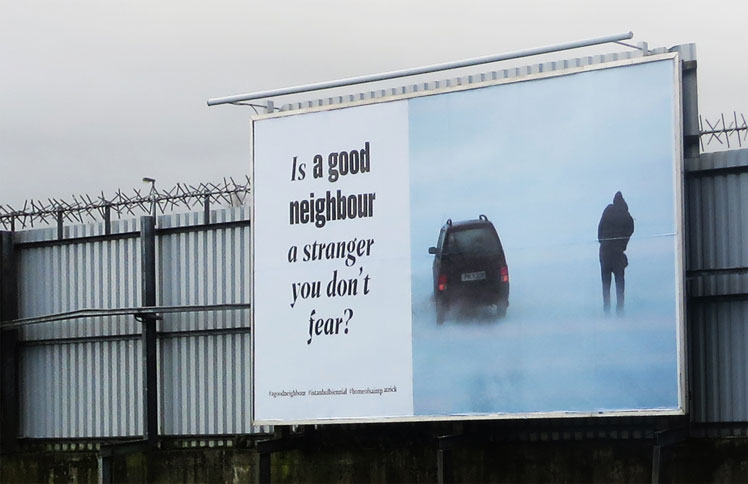Park Chan-kyong, Kukje Gallery, Seoul, through 2 July
Missed last year’s Taipei Biennial? Idiot! ArtReview Asia told you to see it (on these very pages – well, not these actual pages, the pages that were, roughly, in this position in the magazine back then, but don’t quote ArtReview Asia on that) and you didn’t. And now you’re a loser. But maybe you don’t have to be a total loser. One of the standout works in the biennial (which, incidentally, was a slow-burn affair: slightly baffling when you were in it, but better and better the more you thought about it from a safe distance) was Park Chan-kyong’s just-over-25-minute-long, three-channel black-and-white video, Citizen’s Forest (2016). That work is the centrepiece of 安寧 Farewell, Park’s current solo exhibition at Kukje Gallery in Seoul. The haunting work tackles themes of tradition and modernity, ritual and remembrance, historical memory and art history (Citizen’s Forest, which nods to traditional scroll-mounted shan shui paintings, was partly inspired by Oh Yoon’s The Lemures, 1984, a panoramic sketch of a procession of victims of the Donghak Peasant Revolution, the Korean War and the Gwangju Uprising). Indeed, Park’s Small Art History 1–2 (2014/17), one of a number of other works on show here, specifically sets out to detourn traditional art history and the conventional view of the East by the West. Surprisingly, 安寧 Farewell is Park’s first solo show in his homeland in five years. Better-known as an art critic during the 1990s, he began to show art at the end of that decade and has slipped between a variety of media, genre and disciplines (sculpture and slide installations are also on show at Kukje) ever since.
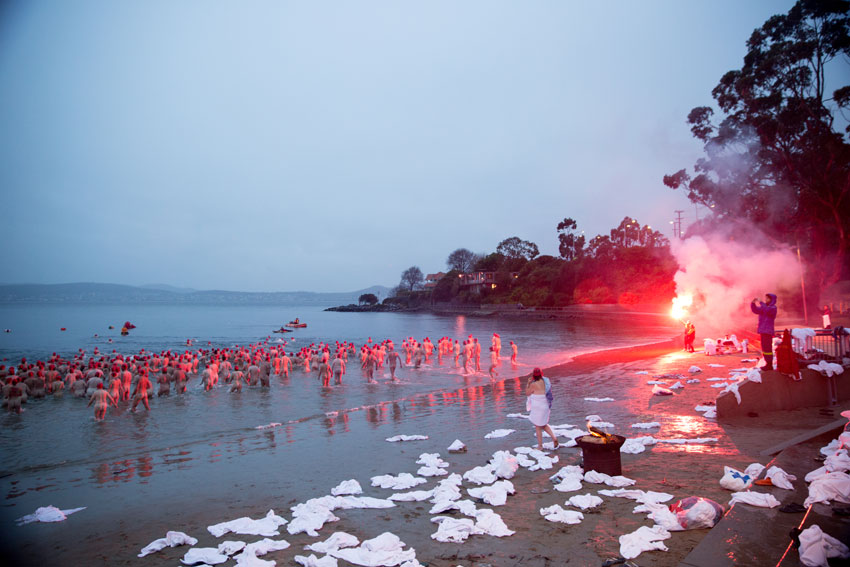
Dark Mofo, Mona, Tasmania, 8–21 June
Park’s work is sometimes described as referencing an ‘Asian Gothic’ aesthetic (in 2011, he codirected the Golden Bear-winning horror short Night Fishing, shot entirely using an Apple iPhone 4, with his brother Park Chan-wook), but a whole different kind of nightmare is about to descend on Mona, Tasmania. Held in June, Dark Mofo is the Museum of New and Old Art’s (Mona’s) two-week festival, held to mark the Southern winter solstice. The event, a celebration of music and art, has been not without controversy since being established in 2013: over the years light installations have caused seizures, authorities have banned mass nude swims and local art students have risen up in protest after 74 panels, each emblazoned with the slogan ‘Your art is shit’, of Scot Cotterell’s Shitstorm (2016) were pasted onto the windows of their college. The swims have since been unbanned and this year the art of protest will be incorporated into the festival via a screening of Act & Punishment (2015), Evgeny Mitta’s documentary on Russian dissidents Pussy Riot. Among the other highlights are performances by German industrial legends Einstürzende Neubauten and Scottish postpunk band Mogwai. This year’s controversy doesn’t concern the banging and screaming of ageing rockers, however, but rather the ageing Austrian actionist Hermann Nitsch, whose 150. Action, which Mofo rather casually describes as ‘a bloody, sacrificial ritual performed by the patriarch of Viennese Actionism, his devoted disciples and an orchestra’, will entertain over-eighteens-only for three hours on the afternoon of Saturday 17 June. A seventy-eight-year-old Father Christmas from hell, Nitsch and his Orgien Mysterien Theater have put on ritualistic performances involving animal slaughter, crucifixions and quasi-religious sacrifices since the artist first conceived of it during the 1950s – part of a quest to locate the human essence, and in response to the traumas of wartime violence, Nazism and their aftermath. Despite the fact that Nitsch will not be using live animals in the work, locals are, to put it mildly, nervous. Perhaps more so since Mona’s owner, gambling millionaire David Walsh, sought to calm reservations concerning Nitsch’s imminent appearance in Hobart by describing the Austrian as a ‘fat, demented sloth, a good bloke, and in my opinion, a great social artist using sordid spectacle to make a point that no amount of Facebook frivolity will ever drive home’; Catherine Bailey, posting on local radio station 983 ABC Hobart’s Facebook page replied, ‘Seems to me art is just a big fat wank these days’. Presumably she was confused and that was in fact a moving tribute to the impact of the late, great Vito Acconci on contemporary art.
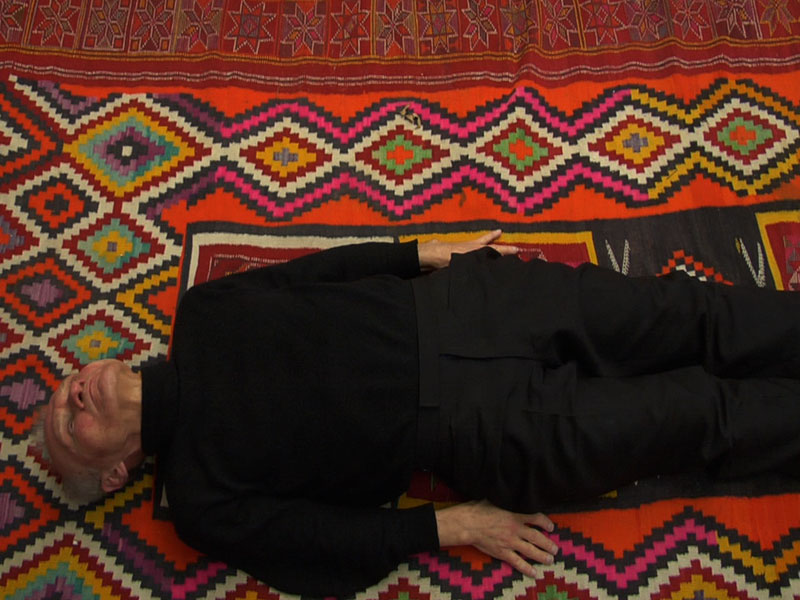
Self-Criticism, Inside-Out Museum, Beijing, through 17 September
Over at Beijing’s Inside-Out Museum it’s Self-Criticism that’s on show. Premised on the notion that, thanks to the rise in terrorist actions, extremist politics, etc, we live in a permanent state of actual and psychological emergency, the exhibition brings together artists, curators and critics, acting in teams of ‘convenors’ and ‘respondents’, in order to explore the tradition of self-criticism as a concept in art, as well as its pros and cons in respect of the embattled world we live in today. It’s the self vs reality, if you like. The show, ‘convened’ by Carol Yinghua Lu, Luo Xiaoming and Su Wei, is divided into themes (such as ‘Border, Expedition, Inspection’ and ‘How much time is being wasted?’) and promises to concern itself with exploring the implications of these propositions rather than explaining the topics. And despite the fact that it’s accompanied by a dense and heavy rhetoric, its participants, including artists such as Rong Guang Rong, Simon Leung, Lee Kit and 2014 ArtReview Future Great Seung Woo Back, suggest that the exhibition can be a forum for an open and vibrant discussion. Look out also for contributions by ArtReview Asia’s Edward Sanderson.
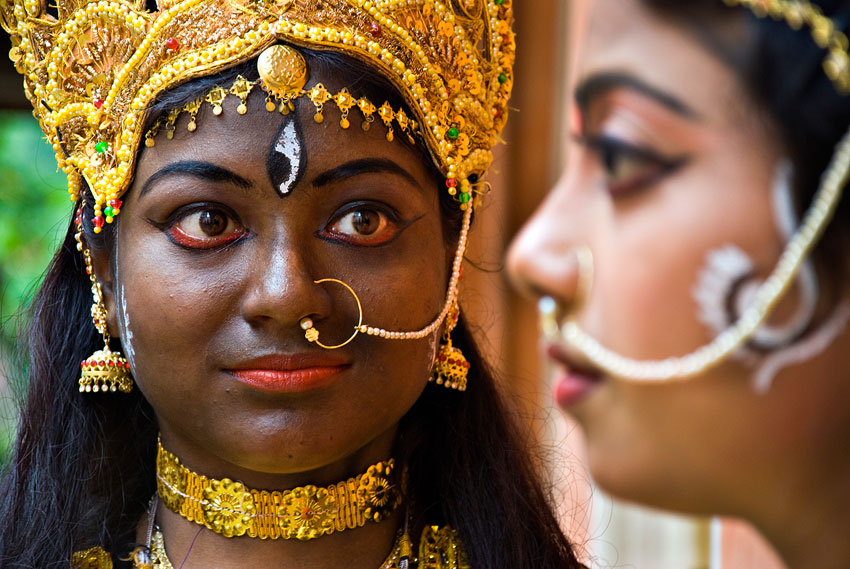
Ashish Avikunthak, Chatterjee & Lal, Mumbai, 27 June – 22 July
Over in Mumbai, another class-of-2014 Future Great (yep, you’d better pay attention to this issue), filmmaker Ashish Avikunthak (a pseudonym the artist took on when he began writing poetry in school), has a solo exhibition at Chatterjee & Lal. Continuing the theme of our time (or at least these previews), a backdrop of social and political turmoil provides the setting for the film Aapothkalin Trikalika (The Kali of Emergency, 2016),which promises to be a ‘metaphysical contemplation in times of perpetual emergencies’. Shot in colour and black-and-white, the hypnotic film features masked figures representing the goddess Kali and her avatars, alongside others of the Hindu pantheon, pulling rickshaws, standing in the midst of traffic and generally fusing secular and religious, traditional and modern, as they manifest amidst the chaos and confusion of the modern world. Like much of Avikunthak’s work (he has been making films for two decades), the film is not immediately open to easy interpretation, but, as he has said, his films ‘are not codes that have to be decoded or cracked’; rather they offer ‘a cinema of religiosity’, akin to the experience of going to a temple.
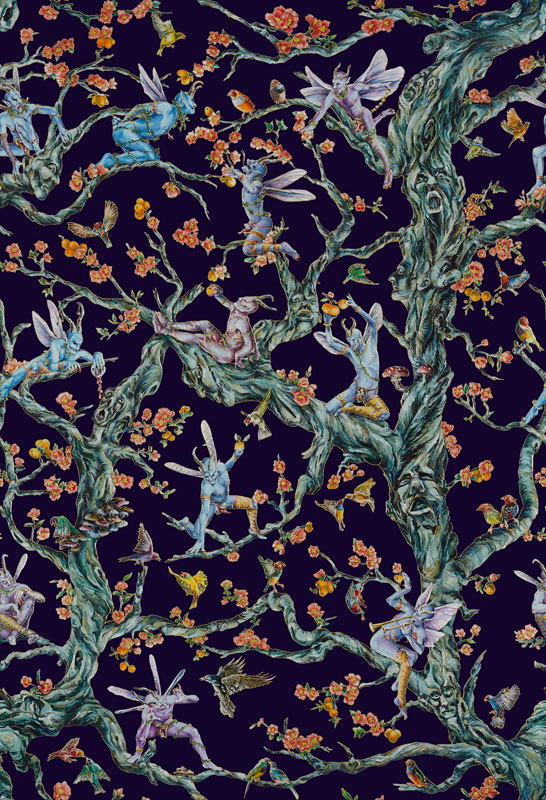
Raqib Shaw, Whitworth Art Gallery, Manchester, 24 June – November
Following India’s partition, Avikunthak grew up in Kolkata, home to the famous Kalighat Kali Temple and, incidentally, birth-place of painter Raqib Shaw, who was later raised in Kashmir before moving to London in 1998. Shaw’s epic, theatrical and often dizzyingly opulent works fuse the traditional art of East and West, replete with references to everything from Hieronymus Bosch and Shakespeare, to Kashmiri shawls and Persian miniatures. Fittingly then, his exhibition at the Whitworth Art Gallery in Manchester will be accompanied by items from the collection ranging from a gold and pink brocaded Kashmiri shawl to a rare engraving by Italian Renaissance painter Andrea Mantegna. Naturally the backdrop to the exhibition is provided by a new set of custom wallpaper designed by the artist himself. A reformatted version of the exhibition will then travel to the Dhaka Art Summit in Bangladesh (2–10 February 2018), the artist’s first solo show in South Asia. So no need to feel like a loser if you miss its Manchester incarnation.
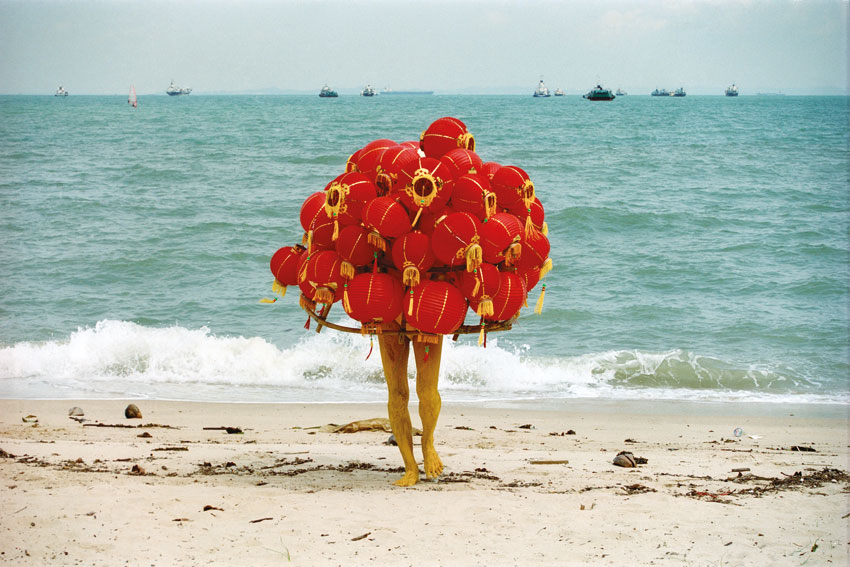
Sunshower: Contemporary Art from Southeast Asia 1980s to Now, National Art Center and Mori Art Museum, Tokyo, 5 July – 23 October
It’s Southeast Asia that provides the subject matter for the Mori Art Museum’s latest megashow. Sunshower: Contemporary Art from Southeast Asia 1980s to Now is timed to mark the 50th anniversary of ASEAN (Association of Southeast Asian Nations) and is so big (‘one of the largest Southeast Asian contemporary art exhibitions in history’) that it includes 86 artists and artist groups, and will spread to Tokyo’s National Art Center as well. The title of the show references the phenomenon of rain falling from clear skies, something which we are assured (in the advance materials for the exhibition) is a frequent occurrence in the region, while the show itself promises to trace the recent (for which read postwar and postindependence) histories of one of the most culturally diverse regions in the world. Look out for the always-interesting work of the late Filipino conceptual artist Roberto Chabet, who despite being frequently cited as the ‘father of conceptual art’ in his country is rather less internationally recognised than he should be; the extraordinarily poetic videoworks of Cambodia’s Vandy Rattana; and, naturally, the work of one of this issue’s Future Greats, Singaporean Ho Rui An, as well as that of Future Greats selectors Ho Tzu Nyen and Arin Rungjang. Do that and you’ll only have scratched the surface, of course. Dig further into the usual swamp of texts about diversity, identity formation and nation-building and this promises to be, for good or bad, something of an unmissable show. You really will be a loser if you don’t take the time to check it out.
One of the billboard posters created for the 15th Istanbul Biennial (this one for placement in Dublin), 2017. Courtesy IKSV, Istanbul
15th Istanbul Biennial, various venues, Istanbul, 16 September – 12 November
‘Home is approached as an indicator of diverse identities and a vehicle for self-expression, and neighbourhood as a micro-universe exemplifying some of the challenges we face in terms of co-existence today.’ No, that’s not one of the introductory texts to Sunshower. Rather, it’s artist duo Michael Elmgreen and Ingar Dragset talking about their upcoming 15th Istanbul Biennial. So if all the stuff about regional identity you’ll have learned about in Tokyo has warmed you up, you’ll want to make a beeline to the Turkish capital in order to bring yourself to a boil. Titled A Good Neighbour, Elmgreen & Dragset’s biennial explicitly promises to ‘bear traces of having been curated by artists’, rather than by… errr… OK, let’s not go there, we’ll be back in 983 ABC Hobart territory before we know it… What does the thing about artists mean? Who knows? That’s why we go to exhibitions rather than reading about what they might be like and then ordering another takeaway or going off for a round of golf. Still, a clue perhaps came at the biennial’s launch, where instead of the usual blather, a series of performers articulated 40 questions about neighbourliness: is a good neighbour your friend on Facebook? Is a good neighbour a reminder of how things used to be? Is a good neighbour someone who would never complain? And so on… There’s absolutely no doubt, too, that the ideas about privacy, publicness, community, dialogue and identity that this exhibition promises to raise are some of the most pressing and urgent in both Turkey and the rest of the world right now. Um… you don’t need to tell me what you’ll be if you miss this one, right?
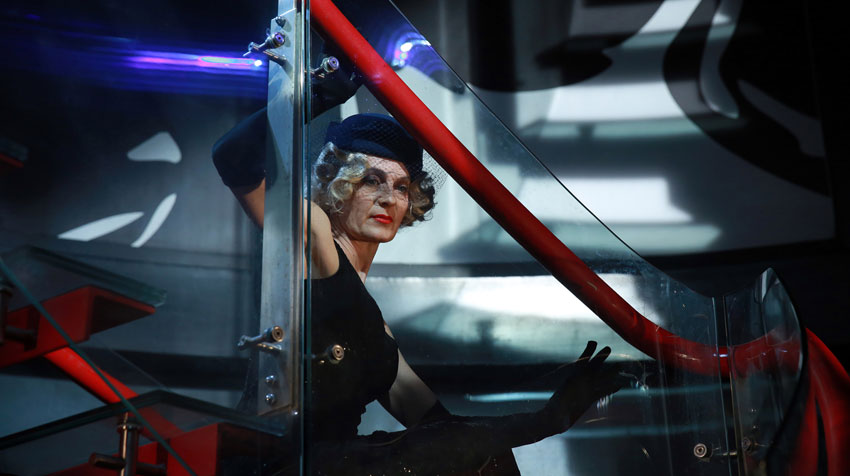
Sutthirat Supaparinya and Yuan Keru, Leo Gallery, Shanghai, through 22 July
Neighbourliness is also the (necessary) subtheme of Leo Gallery’s current exhibition featuring the works of Sutthirat Supaparinya and Yuan Keru. Chiang Mai-based Supaparinya (whose 2012 video installation My Grandpa’s Route Has Been Forever Blocked, documenting a journey down the Ping River, which was dammed in 1958, will be shown in Sunshower) is an artist who works in a variety of media, often to document how industry has affected human and natural landscapes. At Leo she will show two new video works: Roundabout at km 0 and Unintentionally Waiting (both 2017), works that focus on transport and the problems inherent in the meeting of personal and larger social structures. These themes are also present in Chinese Yuan Keru’s Fleeting Strangers (2017), which centres on four sci-fi stories focused on the subsuming of individuals by the structures of science and technology. Visions of the present and the future side-by-side, if you like…
This is Part I of ‘Previews’, from ArtReview Asia Summer 2017. Read part II here
First published in the Summer 2017 issue of ArtReview Asia
